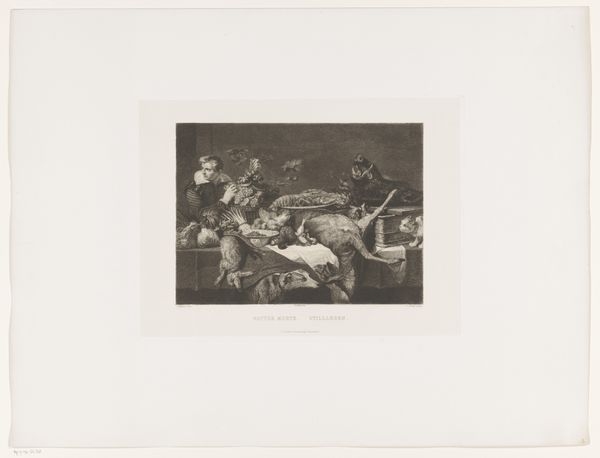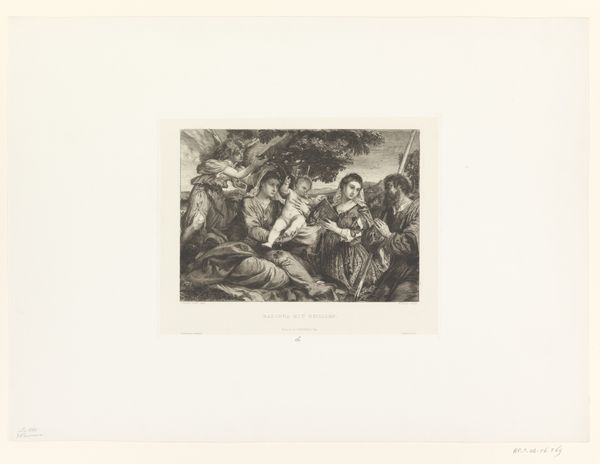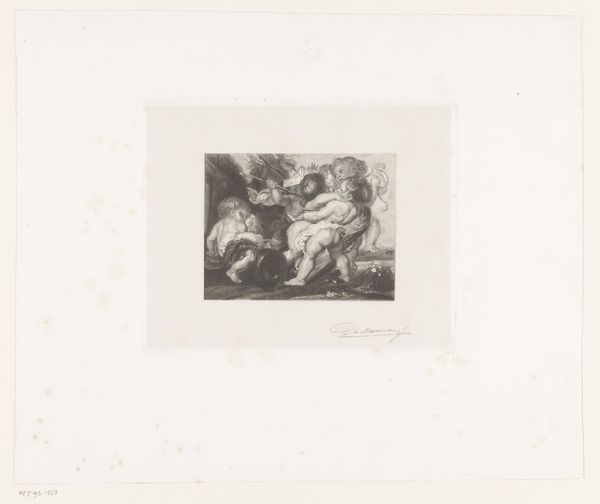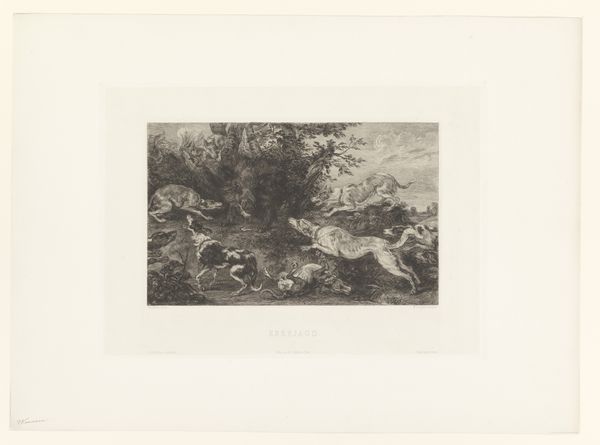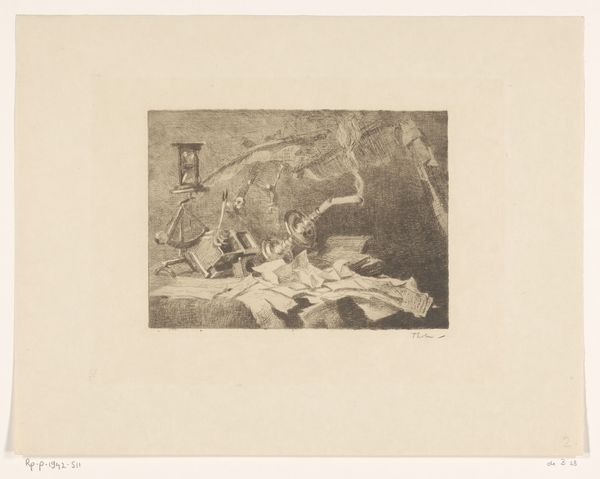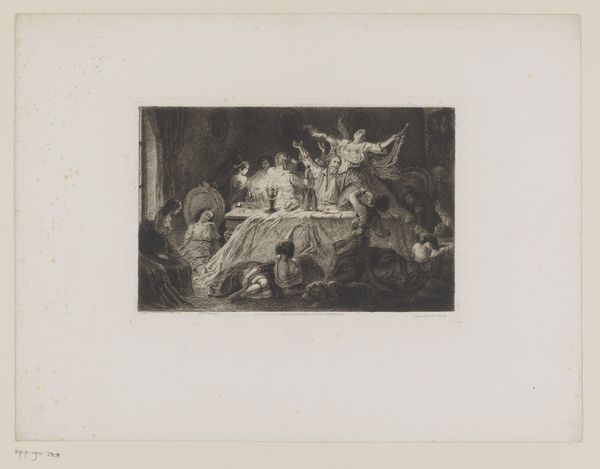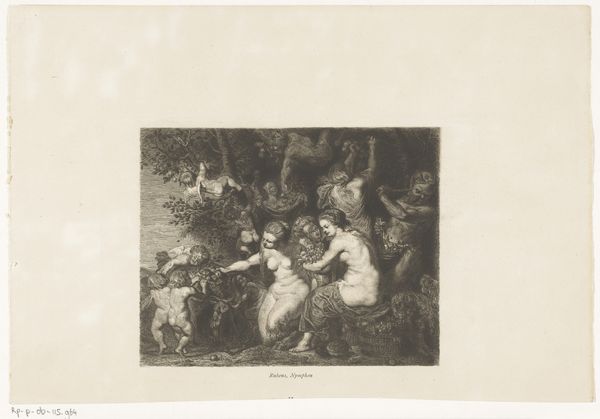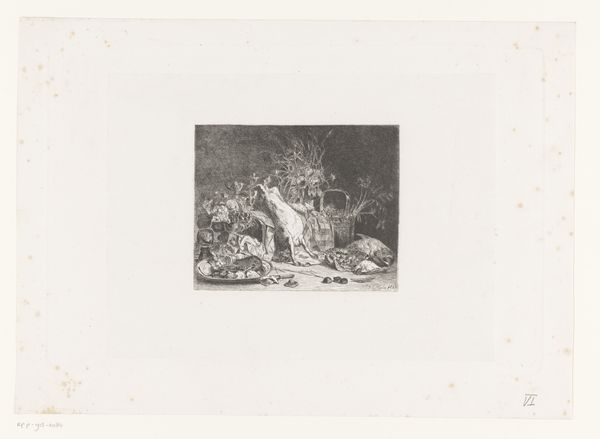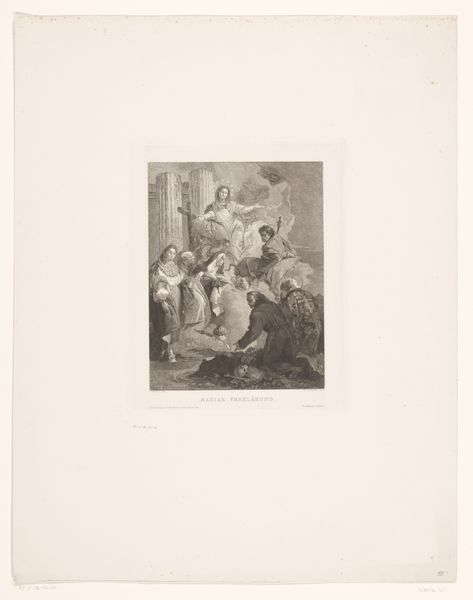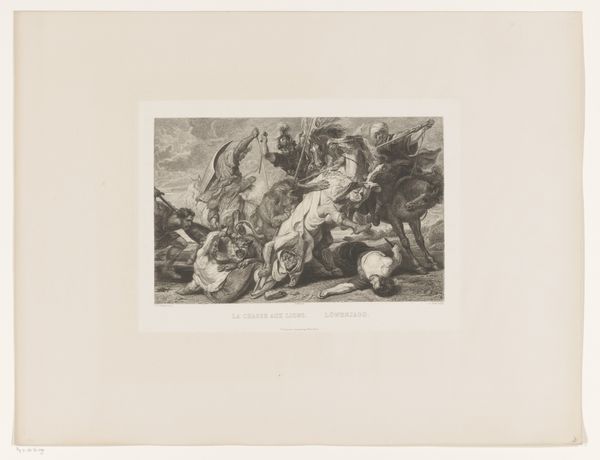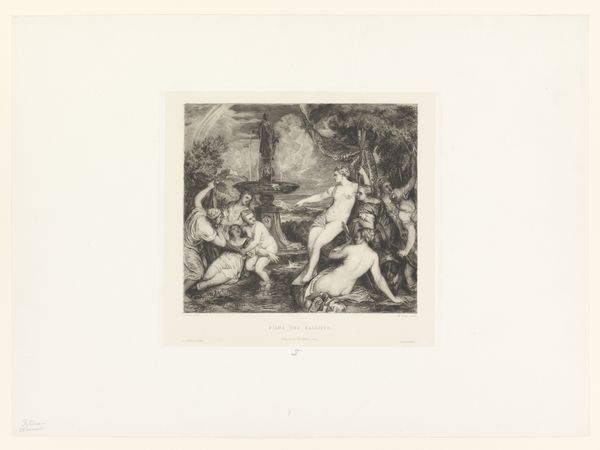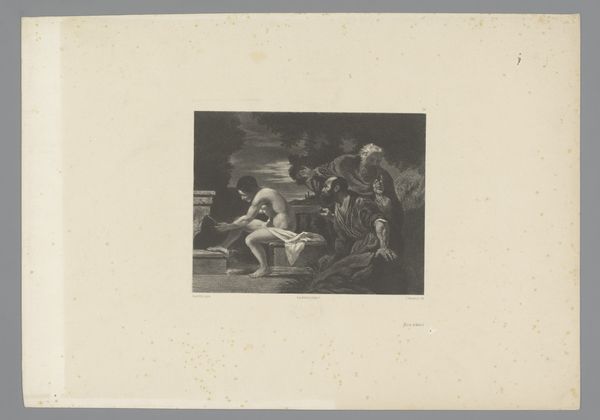
Dimensions: height 271 mm, width 319 mm
Copyright: Rijks Museum: Open Domain
Editor: So, this is William Unger's etching, "The Good Samaritan," created sometime between 1861 and 1889. The composition, with its stark contrasts and baroque style, feels both dramatic and intimate at the same time. What social narratives do you find at play within it? Curator: It's a powerful image, isn't it? Unger, working in a time of increasing secularism, really uses the well-known biblical parable to engage with then-contemporary notions of charity and civic duty. How does the rendering in a readily available medium like print potentially shape the impact of this image, and how it might be received by the public? Editor: Well, the printmaking certainly makes it more accessible and easily distributed to a wider audience, making it less of a precious object and more of a… tool for promoting social values. It almost turns a religious scene into social commentary. Curator: Exactly! Think about the art institutions and wealthy patrons of the time – were they actively supporting this kind of socially conscious art, or was printmaking a way to circumvent their control and speak directly to the people? Consider, too, how the "old engraving style" suggests that even modernity leans heavily into older artistic traditions to pass its message across, especially those touching social behaviors. Editor: That makes sense. I hadn’t really thought about how the medium itself is part of the message. Were prints like these used to critique social inequalities? Curator: Absolutely. While ostensibly illustrating a religious story, it prompts viewers to consider their own roles in society and the plight of the vulnerable. Is the focus more on religious piety or immediate earthly action? The print participates in a dialogue about responsibility during a period of huge social change and burgeoning welfare models. What does Unger choose to emphasize through his composition of landscape? Editor: The somewhat threatening darkness surrounding the figures maybe indicates the harsh conditions for those abandoned by society, and, together with the Good Samaritan lighting, puts the main spotlight on human compassion as the only refuge. That’s fascinating! Curator: Precisely! It underscores how art is never truly isolated, and often engages in important discussions about culture and morality within a particular context. Editor: I'll definitely keep in mind how production, audience and cultural moment impact the social significance of an artwork. Thank you. Curator: A pleasure. Understanding those relationships transforms how we see everything!
Comments
No comments
Be the first to comment and join the conversation on the ultimate creative platform.
